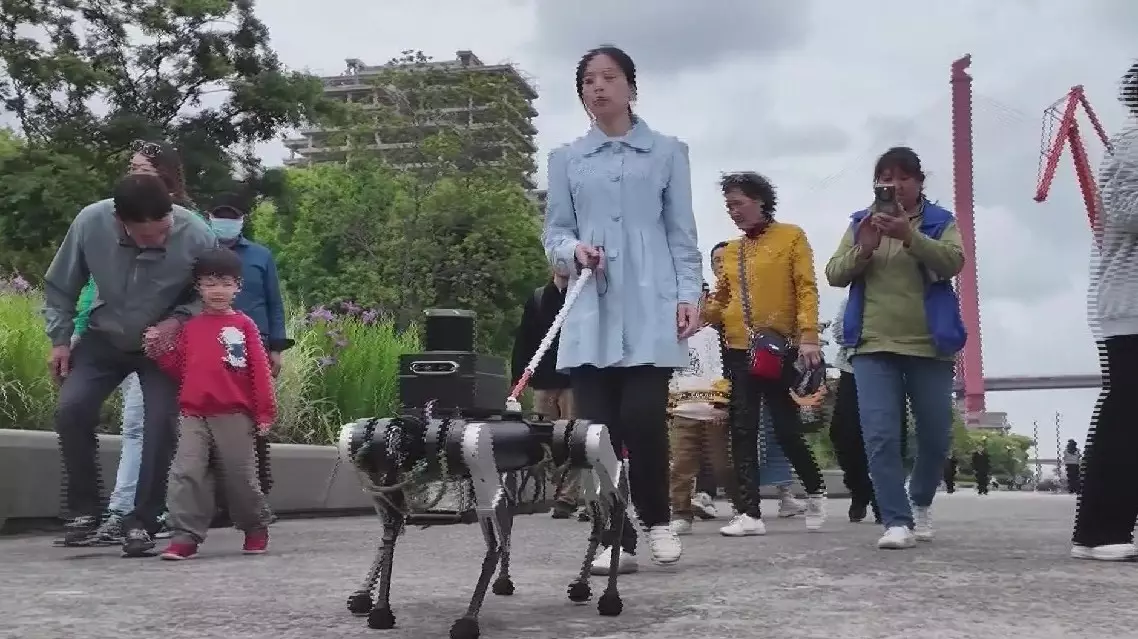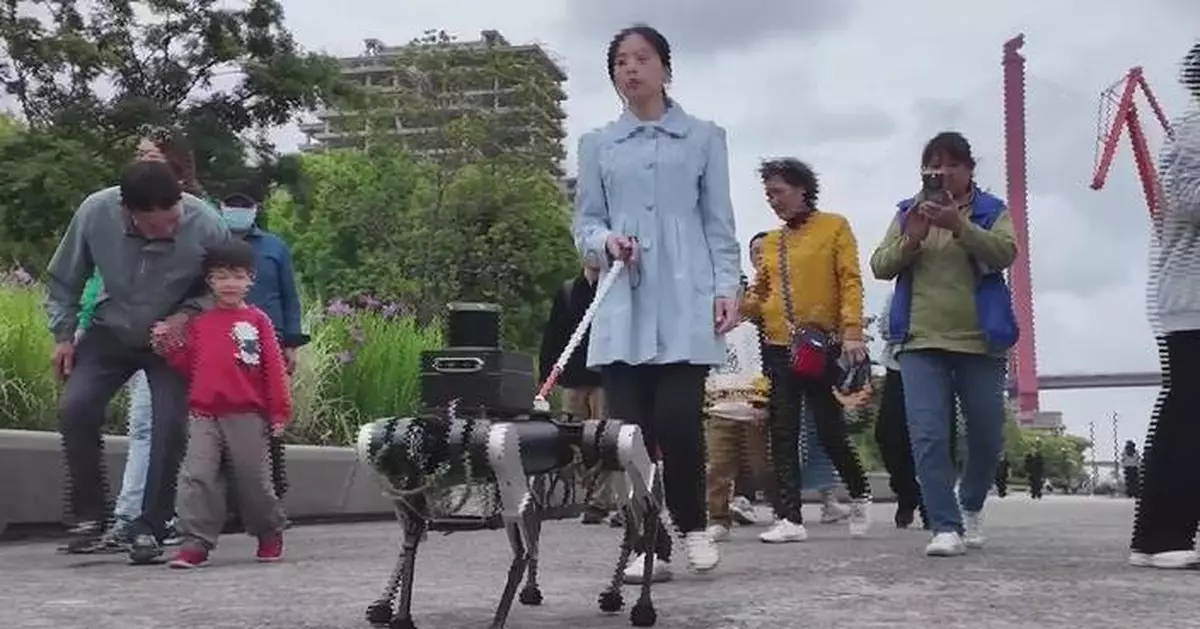A Chinese-developed robotic dog could help bridge the severe shortage of guide dogs in China, enhancing accessibility for the visually impaired in the age of artificial intelligence.
Pioneered by engineers at Shanghai Jiaotong University, the dog features a unique six-legged design as well as advanced navigation and safety features.
During a field test by the Yangpu River on Thursday, 41-year-old Li Fei experienced the assistance of a guide dog for the first time. The robot demonstrated fluid movements such as advancing, stopping, and turning, and reacting instantaneously to nearby pedestrians and obstacles.
Chen Zhijun, an assistant researcher at the School of Mechanical and Power Engineering at Shanghai Jiaotong University, explained the advantages of the additional pair of legs.
"Most robotic dogs on the market have four legs that step in pairs, leaving them balancing on two legs at a time in a linear configuration. This makes them unstable as they need to continuously step to maintain balance. Our model, however, has six legs. It steps with three legs at a time, always forming a stable triangular base and ensuring it can stand firmly without constant movement," Chen explained.
For Li Fei, walking just a hundred meters with the robotic guide dog was an incredible experience. Overwhelmed by the moment, she squatted down after the test to gently feel the contours of her new companion.
"When it guides me, my path is straighter. On my own, as someone who is blind, I cannot walk in a straight line," Li said.
Researchers noted that the robotic guide dog does not need a constant internet connection because it can indefinitely memorize a route once learned.
Mimicking the capabilities of a real dog, it is equipped with four 'senses': hearing, sight, speech, and touch. The robot's default speed ranges from 0.6 to 0.8 meters per second but can be adjusted according to the user's input.
"Its top speed can reach up to 1.6 meters per second. We control the speed through a responsive interaction with the user. The guide cane senses the force from the user's hand, speeding up when pushed and slowing down when pulled," Chen explained.
Feedback from Li, the test user, provided insights on areas for improvement, including the need to prompt users more often.
"We need plenty of voice prompts. For instance, if the robot dog needs to turn suddenly, the blind user wouldn't anticipate this. The robot dog should speak out its actions in advance to warn of an upcoming turn or when approaching stairs," said Chen.
Despite the introduction of China's first guide dog "Mao Mao" in December 2006, high costs and training difficulties have led to a significant gap between supply and demand, resulting in persistent challenges for visually impaired individuals in the country.
With more than 17 million visually impaired people in China, the development of robotic guide dogs could significantly improve mobility and independence for many.

Six-legged robot guide dog shows promise for China's visually impaired community




















































